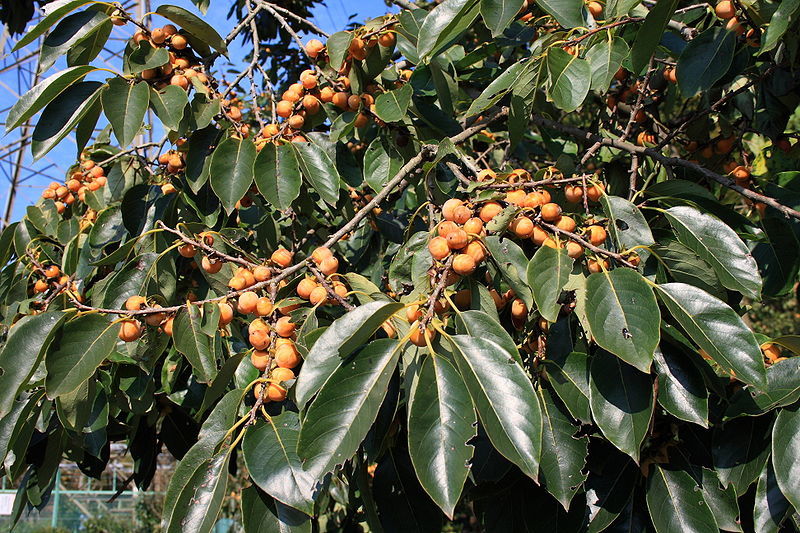Date Plums
Diospyros lotus (translates: "divine fruit")
aka Caucasian persimmon or lilac persimmon;
also: "amlook" (India & Pakistan);
close relative to Diospyros Virginiana (wild, American persimmon), D. kaki (Japanese persimmons) and D. digyna (Black Sapote)
Date plum is a small fruit about the size of a large cherry (3/4" diameter). Resembling a plum, it is in the persimmon family (Diospyros) and is native to Iran, Turkey, and parts of southeast Europe. It is especially popular in the Black Sea region.
The ancient date plum fruit is believed by some historians to be the "honey-sweet fruit of the lotus that makes all men forgetful of their past and neglectful of their future" that Homer referenced in "The Odyssey". It was first introduced into Britain about 1597.

Date plums on a mature tree: photo credit here

Date plum fruit on the tree
Growth
Date plums are a deciduous tree, usually growing 20-29' tall and up to 19' wide. In its Mediterranean habitat, it can reach as tall as 90', though some folks have even used it for a bonsai. It is hardy in USDA zones 7-9. In Florida it is more likely to stay under 20-25', and can be trimmed to a bushy habitat as well.
Stems have a gray-green bark. Shiny, Dark green pointed leaves are 5-6" long, and fall in the cooler weather without even changing color.
Cold hardy to 0°F when mature, Date plums prefer rich well-drained soil. And while they thrive in full sun to partial shade, they need full sun and warm weather to produce fruits.
Flowers
The beautiful lotus-pink flowers are small, but striking.
Female flowers appear singularly in rows along a stem. Male flowers appear in clusters of up to 3 at a time.

Date plum flowers are quite small but exquisite!

Date plum fruit up close
and Fruit
The Date plum is dioecious, meaning trees are either male or female. While the trees are not self fertile, both the male and female will set fruit.
And it takes one of each for pollination if the fruit is to have seeds. Female fruits tend to be larger than male fruits. And pollinated fruits are sweeter while un-pollinated fruits can be more astringent. Read more
The fruit of the Date plums come in two colors: golden orange-yellow and brownish-purple. They are astringent if picked firm and are best left to tree-ripen and picked when very soft. Flavor will then be exquisitely rich, sugary, and velvety-sweet, and taste much like a Mediterranean date when dried. The skin of a date plum is also edible, unlike the bitter tannin-like skin of its cousin, the Fuyu persimmon.
Fruit ripens Jan & Feb in India, and April & May in China.
read more
Date plums will not be available to order until 2021. E-mail us and let us know if have an interest.
